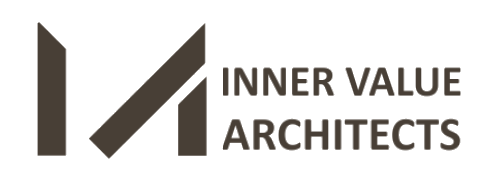In today’s world, we’re all looking for ways to be...
When starting a new home construction project or tackling a renovation, it’s reasonable to have high expectations for the finished product. However, when faced with the realities of financial limits, the search for a dream home can become daunting. The good news is that you can still achieve a high standard of living while sticking to a tight budget. It is totally possible to reach brilliance in residential house design without spending a fortune with a little bit of imagination and careful preparation.
In this article, we will discuss several easy ways to save money without sacrificing elegance or comfort as we build the house of your dreams. Whether you’re just getting started or want to give an old room a facelift, you’ll be able to use the advice here to design a home that’s both comfortable and economical for you and your loved ones. Let’s start this journey of budget-friendly genius, where creativity and smart choices come together to make a residential house design that not only fits your budget but also sparks your imagination.
Essential Budget-Friendly Tips for Residential House Design
Designing a home on a tight budget necessitates planning and preparation. If you want to make your home appealing and practical without breaking the bank, consider some of the suggestions below:
1. Establish a Clear Budget
Setting a budget is the first step in designing a house that fits within your financial capabilities. The budget establishes the monetary limits within which the project must be completed, and it is this limit that guarantees the project’s viability and longevity. It’s important to focus on what’s most critical while also keeping in mind how the final product will look and perform. You should evaluate your financial situation and set aside a particular sum of money for the building process, the interior design, the landscaping, and the furnishings. Keep to this spending plan, and don’t buy anything extra that isn’t absolutely necessary.
2. Choose an Efficient Floor Plan
When planning a home’s layout, picking a functional floor plan is crucial. An effective layout makes the most of the accessible area, improves the home’s practicality, and makes life in it more pleasurable. A common design choice is an open floor plan, which eliminates barriers between the kitchen, dining room, and living room to create one large communal space ideal for entertaining and everyday life. This design lets in plenty of fresh air and sunlight. Avoid wasting square footage by making efficient use of the space you have. Keep costs down by ditching unnecessary partitions by going with an open floor plan. Also, to cut down on labor, keep the water and power lines close together.
3. Embrace Energy Efficiency
You can add personality and sustainability to your home design by reusing and repurposing items. Reusing old or salvaged materials gives a house more character and character than using all brand-new resources. Rustic and unique ambiance can be done by imaginatively incorporating old barn wood, reclaimed bricks, vintage doors, and salvaged windows into indoor and outdoor architectural elements. Upcycling, or finding new applications for old materials, substantially reduces the environmental impact of manufacturing new ones. You can show your concern for the environment and contribute to a more sustainable lifestyle by finding new uses for things that would have been thrown away.
4. Repurpose & Upcycle Materials
You can add personality and sustainability to your home design by reusing and repurposing items. Reusing old or salvaged materials gives a house more character and character than using all brand-new resources. Rustic and unique ambiance can be done by imaginatively incorporating old barn wood, reclaimed bricks, vintage doors, and salvaged windows into indoor and outdoor architectural elements. Upcycling, or finding new applications for old materials, substantially reduces the environmental impact of manufacturing new ones. You can show your concern for the environment and contribute to a more sustainable lifestyle by finding new uses for things that would have been thrown away.
5. Consider Prefabricated or Modular Construction
Modular or prefabricated buildings can save money compared to site-built structures. This approach has many benefits, including lower overall costs due to the streamlined processes and decreased need for human labor in construction. Since the modules can be built in a regulated environment, quality can also be better managed. Prefabrication and modular construction lower the building’s carbon impact when sustainable and energy-efficient materials apply. Prefabricated or modular construction is an option for designing and building a home that is faster, greener, and more efficient without sacrificing quality.
6. Focus on Practicality in Design
When planning the layout of your home, functionality should always take precedence over luxury. Pick long-lasting, trouble-free materials that won’t need frequent attention to boost the life of your house and cut down on your workload. Energy-efficient systems and appliances are also a practical addition, as they help cut down on utility expenses and carbon emissions. A practical design is one that takes into account the homeowners’ needs and wants and finds a balance between form and function. Residential house design that prioritizes functionality not only improves the lives of its inhabitants aesthetically but also makes them happier in general.
7. DIY for Personal Touches
Adding some Do It Yourself (DIY) touches to a home’s layout is a great way to make it feel more like a home and show off the homeowner’s own style. DIY projects provide you the freedom to express your individuality and creativity in different ways around the house. The time and effort you put into projects like these will pay off in the form of a home that better suits your unique tastes and organizational demands. Do-it-yourself projects, which often involve reusing materials or creating products from scratch, may also be an inexpensive approach to expressing one’s individuality at home. This will not only help you save money, but it will also give your home more personality.
8. Landscaping on a Budget
When done right, landscaping can do wonders for a home’s exterior appeal. Focusing on native plants and perennials that need less upkeep and irrigation is one excellent strategy to reduce landscaping costs. The local environment is ideal for these plants, so they require little care to thrive. Using recycled materials, such as recycled bricks for a garden path or old planks of wood for raised beds, can improve the aesthetics and environmental sustainability of a garden. Designating specific sections for specific purposes, such as a comfortable seating area with repurposed furniture or a do-it-yourself fire pit, may make the most of a space without breaking the bank.
The Bottom Line
Creating a cost-effective, spectacular residential house design needs meticulous planning, resourcefulness, and an ability to think beyond the box. You can achieve a magnificent and pleasant home within your budget by implementing the aforementioned residential house design tips. Remember to DIY whenever possible, look into prefabricated choices, and take a cost-effective approach to landscaping. With these money-saving techniques, you can make your fantasies a reality by designing your ideal home within your budget. But if you find the process overwhelming and need professional guidance, consulting with architects in Chandigarh or other experienced professionals is a wise decision. With their help, you can turn your dream home into a reality, with a design that takes into consideration your necessities, desires, and finances.










